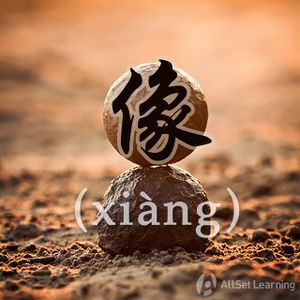Difference between revisions of "Comparing "kanqilai" and "kanlai""
Jacobleeliu (talk | contribs) |
Jacobleeliu (talk | contribs) |
||
| Line 98: | Line 98: | ||
*[[Assessing situations with "kanlai"]] | *[[Assessing situations with "kanlai"]] | ||
| + | {{Rel char|看起来}} | ||
| + | {{Rel char|看来}} | ||
| + | {{Rel char|像}} | ||
{{Used for|Describing things}} | {{Used for|Describing things}} | ||
{{Used for|Describing people}} | {{Used for|Describing people}} | ||
{{Used for|Expressing attitude}} | {{Used for|Expressing attitude}} | ||
| − | |||
Revision as of 09:43, 30 October 2018
-
Level
-
Similar to
-
Used for
-
Keywords
Both 看起来 (kànqǐlái) and 看来 (kànlái) have the meanings, "it looks like" and "to seem," but they have different usages. Whereas 看起来 indicates a reaction to a physical sight, 看来 expresses a user's understanding of a situation.
Contents
看起来 Describes a Physical Appearance
看起来 is used to describe physical appearances. In other words, one can use 看起来 to literally describe what something "looks like."
Structure
Subj. + 看起来 ⋯⋯
Examples
- 蛋糕 看起来 很 好吃 。This cake looks really tasty.
- 这 家 餐厅 看起来 不错。This restaurant looks good.
- 你 男朋友 看起来 很 成熟 。Your boyfriend seems very mature.
- 老板 看起来 有点 不 高兴 。The boss seems a little unhappy.
- 你们 看起来 差不多 高 。You two seem to be the same height.
看起来 When Using an Analogy
看起来 can also be used to express how something "looks like" something else. But unlike the previous usage of 看起来, and with the help of "像," we can explicitly state what the object looks like.
Structure
Subj. + 看起来 + 像 ⋯⋯
Examples
- 你 妈妈 真 年轻 !看起来 像 你 姐姐 。Your mother is so young! She looks like your older sister.
- 我 看起来 像 不 像 大 老板 ?Do I look like a big boss?
- 你们 俩 看起来 像 情侣 。You two look like a couple.
- 他们 看起来 不 像 有钱 人 。They don't seem like rich people.
- 那 个 喝醉 的 男人 看起来 像 你 老公 。That drunk guy looks like your husband.
看来 When Assessing a Situation
看来 can be used by a speaker to indicate his/her understanding of a situation. Note that 看来 is used in a manner, such that the speaker isn't necessarily indicating the physical appearance of anything. Rather, 看来 employs more of an abstract reading for how a situation "seems like."
Structure
看来 + Perspective
Examples
- 看来他不来了,都这么晚了。It seems he's not coming. It's already so late.
- 看来你玩得不高兴,怎么这么早就回来了?I guess you didn't have a good time. Is that why you came back so early?
- 现在看来,事情没那么糟。Now it looks like things aren't that bad.
看来 as "From X's Perspective"
看来 also holds the form of expressing one's perspective. A more literal translation would be "the way one sees it..." The full form is mainly used in formal writing and speaking.
在 + Person + 看来 + Perspective
Examples
- 在我看来,不 会 花 钱 的 人 就 不 会 享受 生活。The way I see it, people who won't spend money aren't going to enjoy life.
- 在他看来,公司 大小 不重要,重要的是老板好不好。According to him, the size of the company isn't important. What's important is whether or not the boss is good.
Example Dialog
A good way to differentiate the two phrases is to distinguish the points of emphasis in both phrases. 看起来's forms characterize the object, while 看来's forms more emphasize the subject. In other words, 看起来 stresses how an object appears, and 看来 stresses how a situation appears to the user. Take a look at the dialog below to grasp these differences.
- A: 看来他不来了。 It seems he is not coming.
- B: 天气看起来不好。在我看来,他不会来因为会下雨。 The weather looks bad. The way I see it, he won't come because it will rain.
See Also



